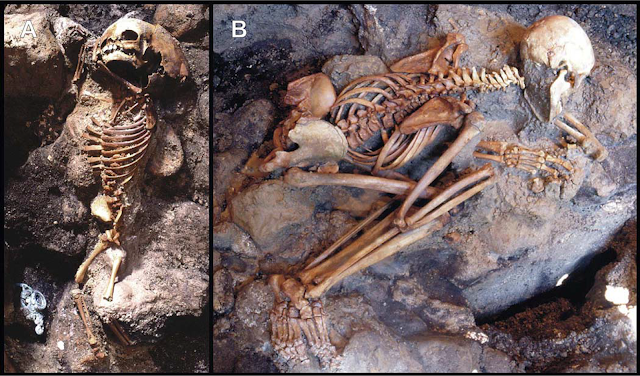The extent of the threat of an eruption of Vesuvius and its effects on the people of Campania is a widely debated scientific issue, especially considering the vast territory around the volcano, now densely urbanized by the modern metropolis of Naples and its 3 million inhabitants.
 |
| Plaster cast of a Pompeiian volcano victim, made from a centuries-old hollow in solidified ash [Credit: Hand Madej/Laif/Redux] |
The archaeological and anthropological surveys conducted in recent decades at the ancient beach of Herculaneum have brought to light more than 300 victims of the eruption, as if they were frozen the time at the last moment of life.
The extraordinary results of this research highlight the impressive damaging effects of extreme temperatures associated with pyroclastic flows, even at considerable distance from the volcano, and even for people sheltered inside buildings.
This study demonstrates the value of joint bioanthropological and archaeological investigations, both in the field and in the laboratory, able to give information otherwise not obtainable at the level of current volcanic episodes, but also of great importance for the reconstruction of both historical and biological Vesuvian populations in Roman times and the lethal events that characterized the last moments of life.
Source: Università degli Studi di Napoli Federico II [September 27, 2018]








No comments: